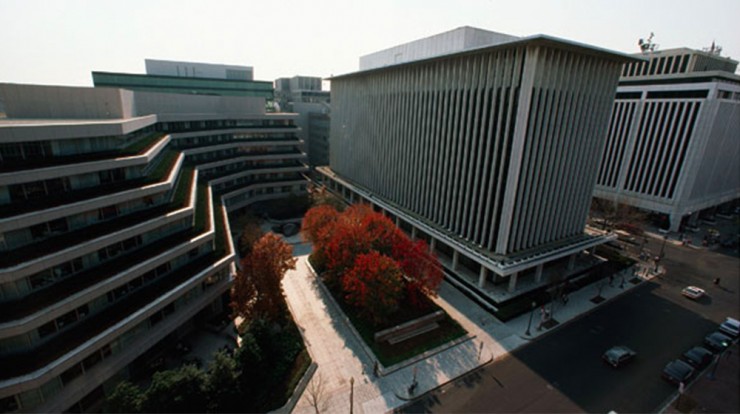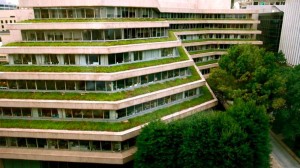

Project Profiles
National Geographic Society Carbon Analysis
Bill Browning
Share
Learn more about our environmental strategy work and services by emailing us at [email protected]. Follow the conversation on twitter: @TerrapinBG.

Vegetated terrace at the National Geographic Headquarters. Copyright National Geographic.
An established leader in conservation, The National Geographic Society’s (NGS) commitment to sustainable facilities management is evidenced by their recognition as a US EPA Climate Leader, participation in the Energy Star program, offsetting 100% of their electrical use with green power, and becoming one of the original pilot projects in the US Green Building Council’s LEED for Existing Buildings program. In 2008, the organization reinforced this commitment by aggressively pursuing greenhouse gas reduction strategies for their corporate operations and facilities in hopes of achieving carbon neutrality for their headquarters complex in Washington, DC. To reach their goal, NGS selected a Terrapin-led team of experts to determine the feasibility of carbon neutrality for the three main buildings at the headquarters campus.
Working in collaboration with CTG Energetics and GHT Limited, Terrapin produced a greenhouse gas and energy end-use study for NGS’s headquarters campus. The process began with a series of brainstorming sessions and energy audits to establish the size and nature of the campus carbon footprint. The resulting report focused on energy and carbon assessment and described the proportion of GHG emissions associated with each building operations including the on-site combustion of natural gas, use of purchased electricity, commute and building related transportation, water use, and solid waste generation and disposal. The team used on-site measurements and computer modeling to investigate the scale of impact and financial/construction sequencing strategies for the facilities. To achieve carbon neutrality on the complex, the Terrapin team advised NGS to consider a combination of long-term capital upgrades based on lifecycles for equipment and building components, as well as operational improvements and engaged carbon offsets.
*Header and feature image copyright National Geographic
Topics
- Environmental Values
- Speaking
- LEED
- Terrapin Team
- Phoebe
- Community Development
- Greenbuild
- Technology
- Biophilic Design Interactive
- Catie Ryan
- Spanish
- Hebrew
- French
- Portuguese
- Publications
- Occupant Comfort
- Materials Science
- Conference
- Psychoacoustics
- Education
- Workshop
- Mass Timber
- Transit
- Carbon Strategy
- connection with natural materials
- interior design
- inspirational hero
- biophilia
- economics of biophilia
- Sustainability
- wood
- case studies
- Systems Integration
- Biophilic Design
- Commercial
- Net Zero
- Resorts & Hospitality
- Energy Utilization
- Water Management
- Corporations and Institutions
- Institutional
- Ecosystem Science
- Green Guidelines
- Profitability
- Climate Resiliency
- Health & Wellbeing
- Indoor Environmental Quality
- Building Performance
- Bioinspired Innovation
- Biodiversity
- Residential
- Master Planning
- Architects and Designers
- Developers and Building Owners
- Governments and NGOs
- Urban Design
- Product Development
- Original Research
- Manufacturing
- Industrial Ecology
- Resource Management
- Sustainability Plans
- Health Care
- Carbon Neutrality


